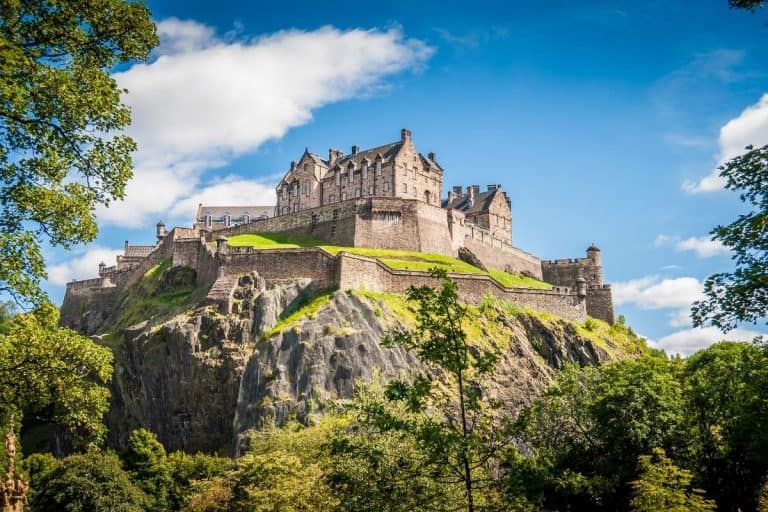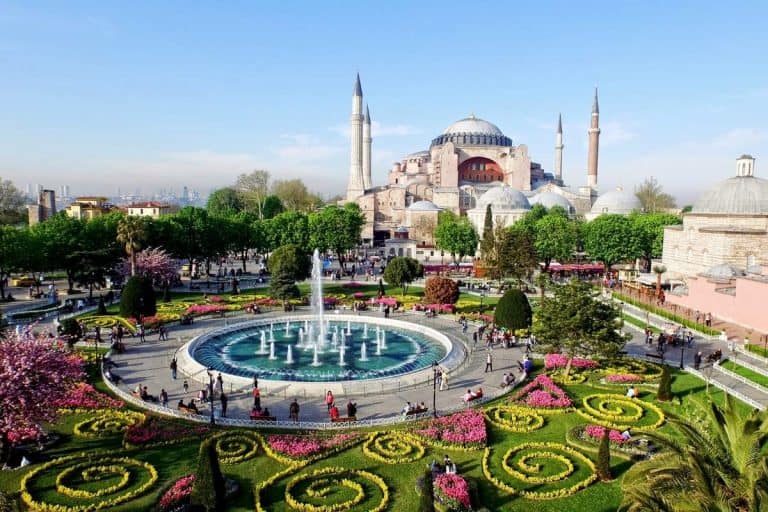Last updated on May 20, 2023
Europe is home to some of the world’s most iconic landmarks and monuments, including the Eiffel Tower and Arc de Triomphe in Paris, the Berlin Wall in Germany and Stonehenge in England. Other European landmarks, including the Acropolis, the Sistine Chapel, and the Hagia Sophia, showcase integral moments and stories within Europe’s history and culture. Most have become major tourist attractions in their own right – telling the story of their people, while amazing visitors with fantastic architectural styles, art, or religious paintings.
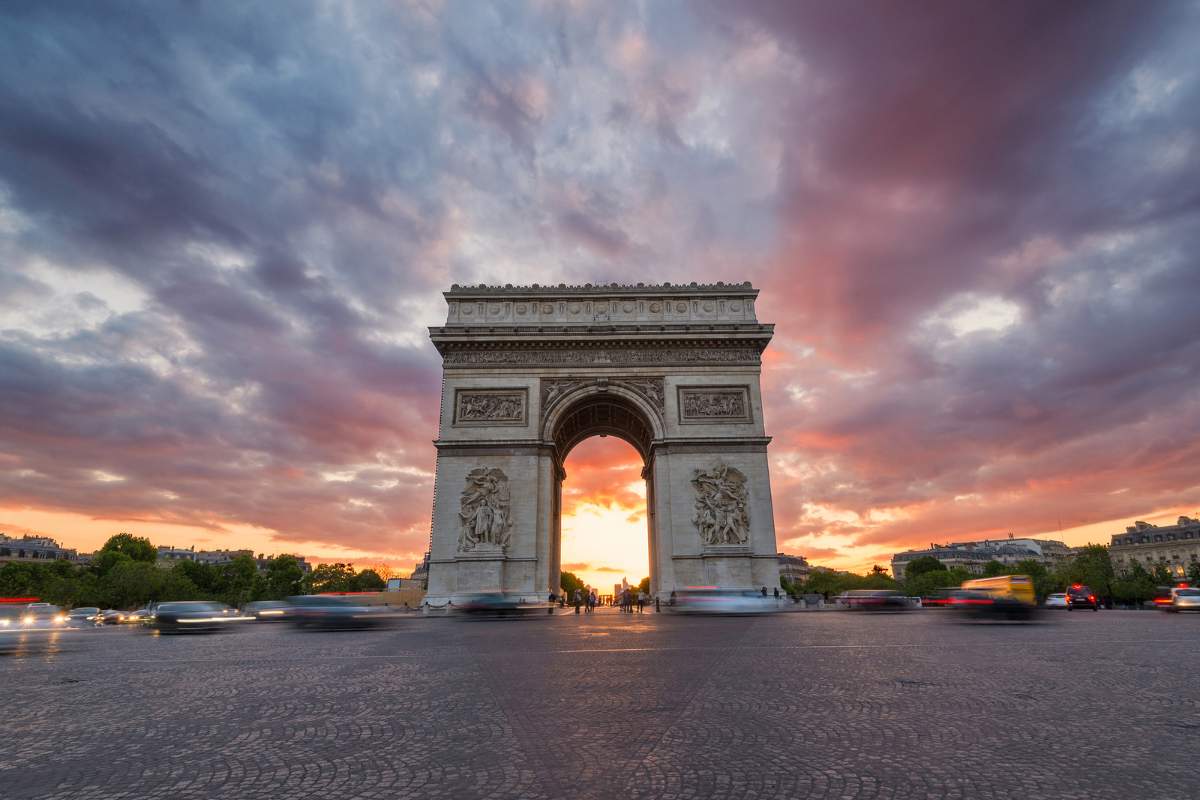
In this blog post, we’ll look at 40 facts about some of the most famous landmarks in Europe. You’ve probably heard about many of them, but here are some interesting facts about each that may intrigue you!
Think you’re an expert already? Then take our quiz (link below) on famous landmarks in Europe! Or study up first with the following fun and interesting facts.
40 Facts About Famous Landmarks in Europe
Eiffel Tower (France)
The Eiffel Tower in Paris, France, is named after its designer, Gustave Eiffel, and was built for the 1889 World’s Fair. Upon the unveiling, Parisians did not accept the Eiffel Tower with anything but contempt, calling it “a truly tragic street lamp,” a “useless and monstrous eyesore that would taint Paris forever,” and “a hideous column with railings.” Nonetheless, the Eiffel Tower is designated a UNESCO World Heritage Site and stands as a famous monument in Paris.
Louvre Museum (France)
The Louvre Museum in Paris, France, is not only the world’s largest art museum but is also the most visited art museum in the world. The Louver’s history dates back to 1190 when it was constructed as a fortress by King Phillip II of France to protect the city from outsiders. It opened to the public as an art museum in 1793 and was only devoid of art during World War II when the Louvre Museum was emptied to avoid the looting that Hitler’s troops were known for.
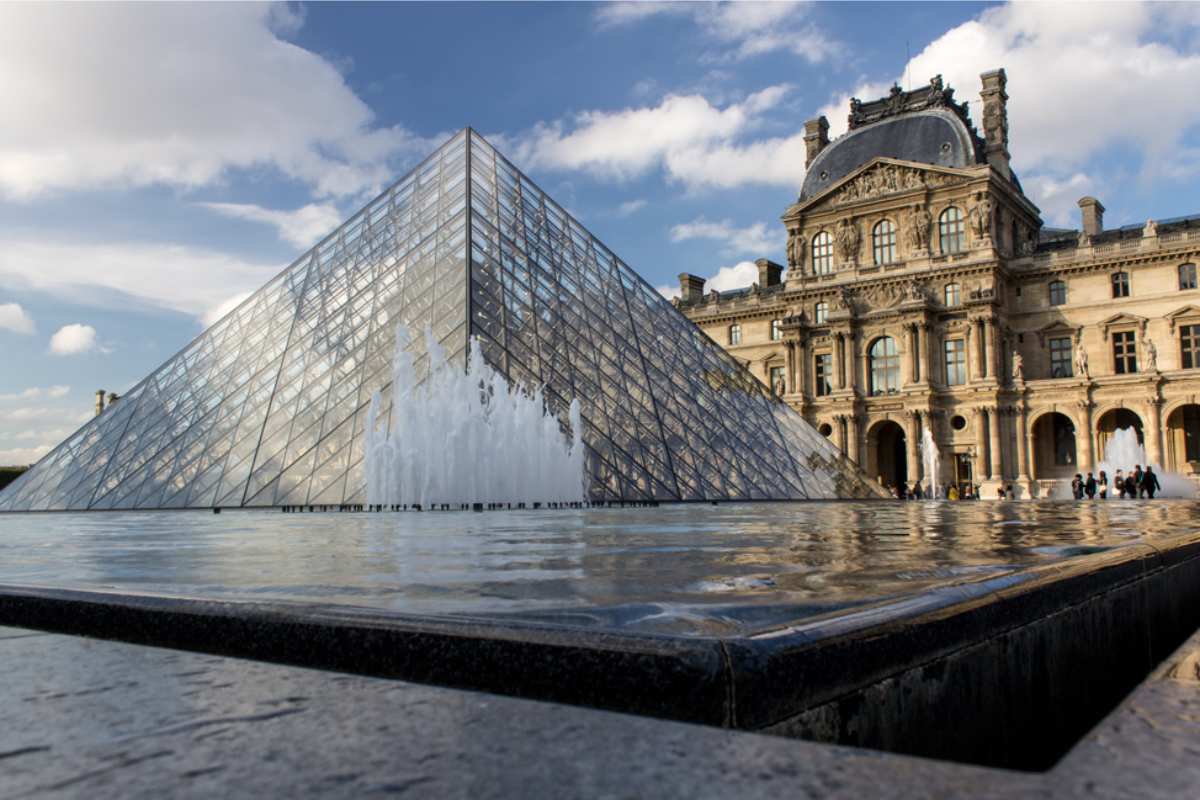
Palace of Versailles (France)
The Palace of Versailles is a grand château in the Île-de-France region of France that is a stunning example of French baroque architecture. It was originally built in the 17th century by Louis XIV as a hunting lodge before being transformed into an extravagant royal palace. It functioned as the official residence of the French royal family from 1682 to 1789. In 1789, the French Revolution forced Louis XVI to leave Versailles for Paris, and the Palace would never again be a royal residence. It is most famous for the Hall of Mirrors, built in the 17th century and extravagantly decorated with 357 mirrors and 20 candelabras. The Palace was expanded and renovated over the centuries, and it was eventually declared a UNESCO World Heritage Site in 1979.
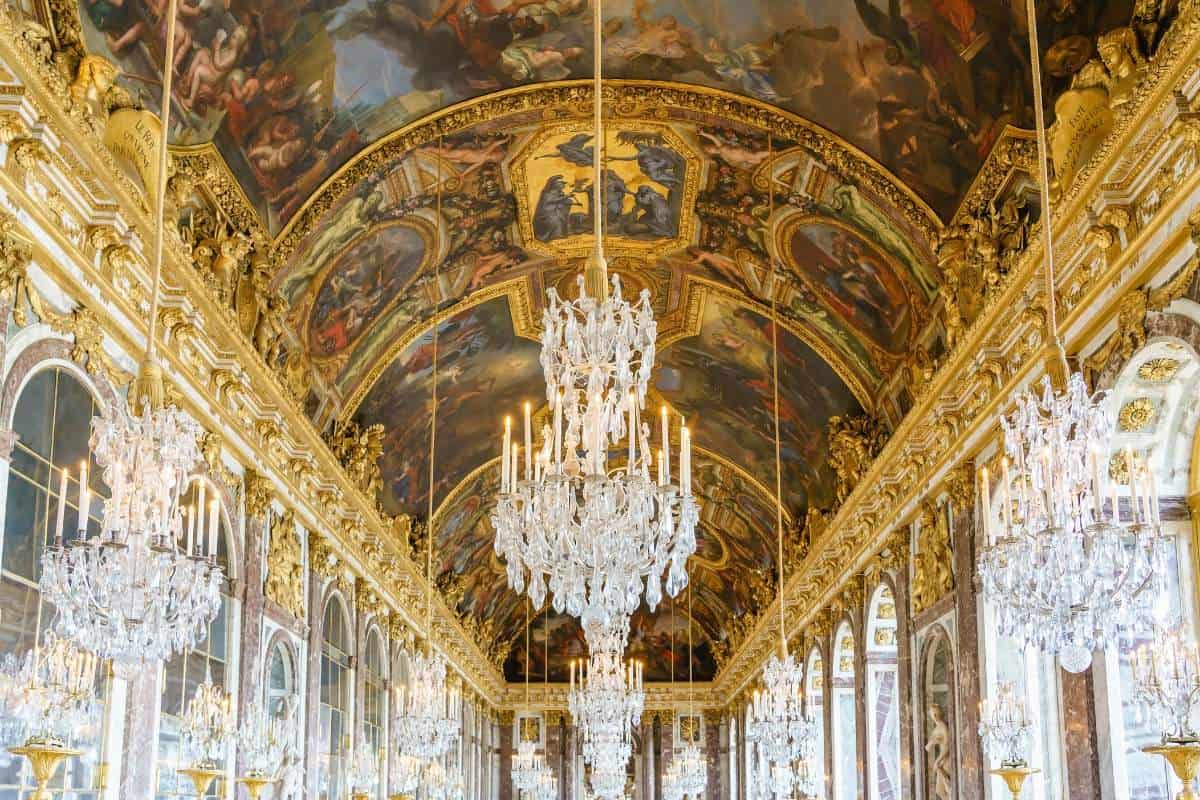
Notre Dame Cathedral (France)
The iconic Cathedral of Notre Dame has a long and storied history in Paris, France. Construction of the cathedral began in 1163 and was largely completed by 1345. It is one of the oldest cathedrals in the world and has been a famous European landmark for centuries. The cathedral’s architecture combines Gothic and Romanesque styles and is a masterpiece of French Gothic design. The cathedral was the tallest structure in Paris for many years until the Eiffel Tower was built in 1889. Unfortunately, a major fire in 2019 destroyed much of the cathedral, though its major features remain intact and are being restored.
Arc de Triomphe (France)
The Arc de Triomphe is a famous monument in Paris, France, commissioned in 1806 by Napoleon Bonaparte to commemorate his military victories. The arch is made of stone, is 50 meters high and 45 meters wide, and is located at the end of “the world’s most beautiful avenue,” Champs-Élysées. It holds the Unknown Soldier’s remains from World War I and is decorated with relief sculptures of battles from the French Revolution and Napoleonic Wars. The Arc de Triomphe is an iconic representation of French history, culture, and national pride.
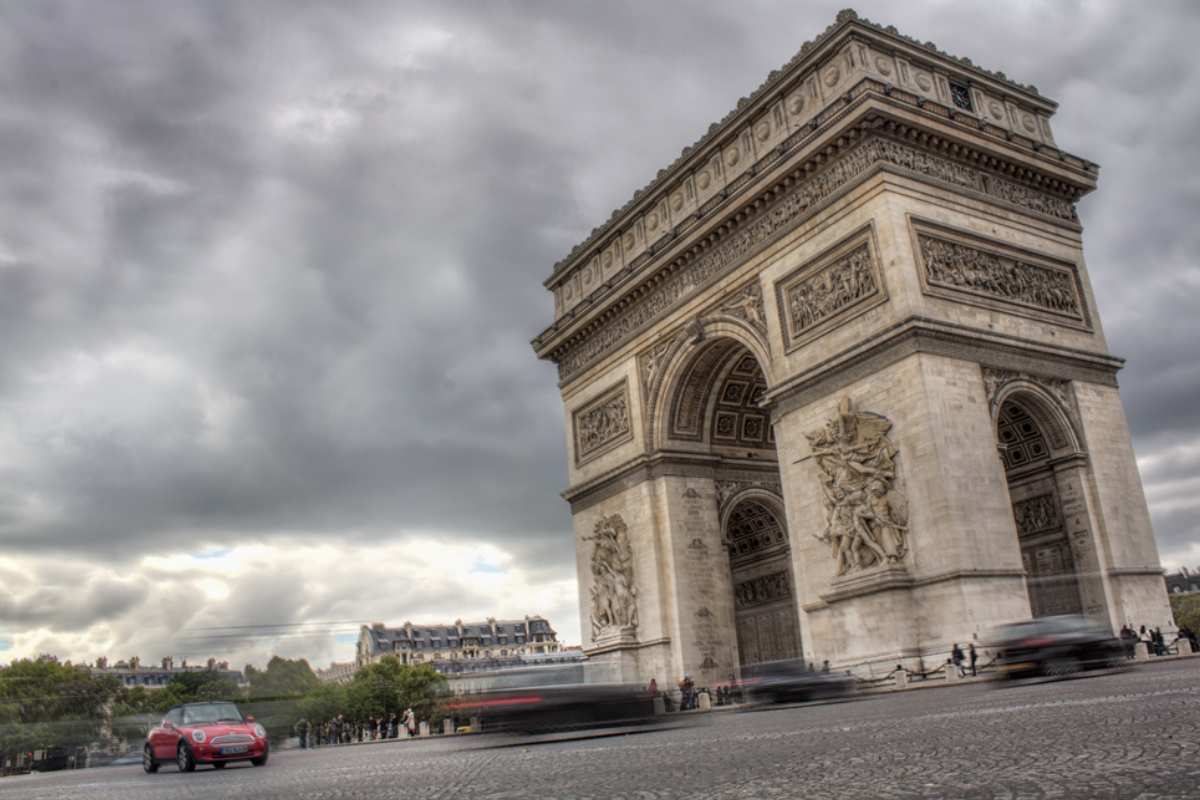
Catacombs of Paris (France)
This one differs from other famous landmarks in Europe because it’s not an easily seen monument. In fact, it is hidden underground! The Catacombs of Paris are full of human remains and intriguing history throughout a network of underground galleries in southern Paris. The length of this underground network is thought to be around 185 miles (300 km), and it was used originally as a limestone quarry. However, when the largest cemetery in Paris, which had been used for many centuries to bury the dead, had to be closed in 1780 due to space constraints, the remains needed to be moved. Thus, the underground quarry sites were prepared to become resting places for the numerous remains. Now the catacombs are a popular tourist attraction, giving insight into the city’s unique history and how people of the past lived and died.

Colosseum (Italy)
The Colosseum in Rome, Italy, was completed in 80 AD and was once used for gladiatorial contests. It is an iconic symbol of the power and grandeur of the Roman Empire and is a popular tourist attraction today, marked as one of the most famous European landmarks. Despite its age, it is also the largest amphitheater ever built and remains the largest standing in the world.
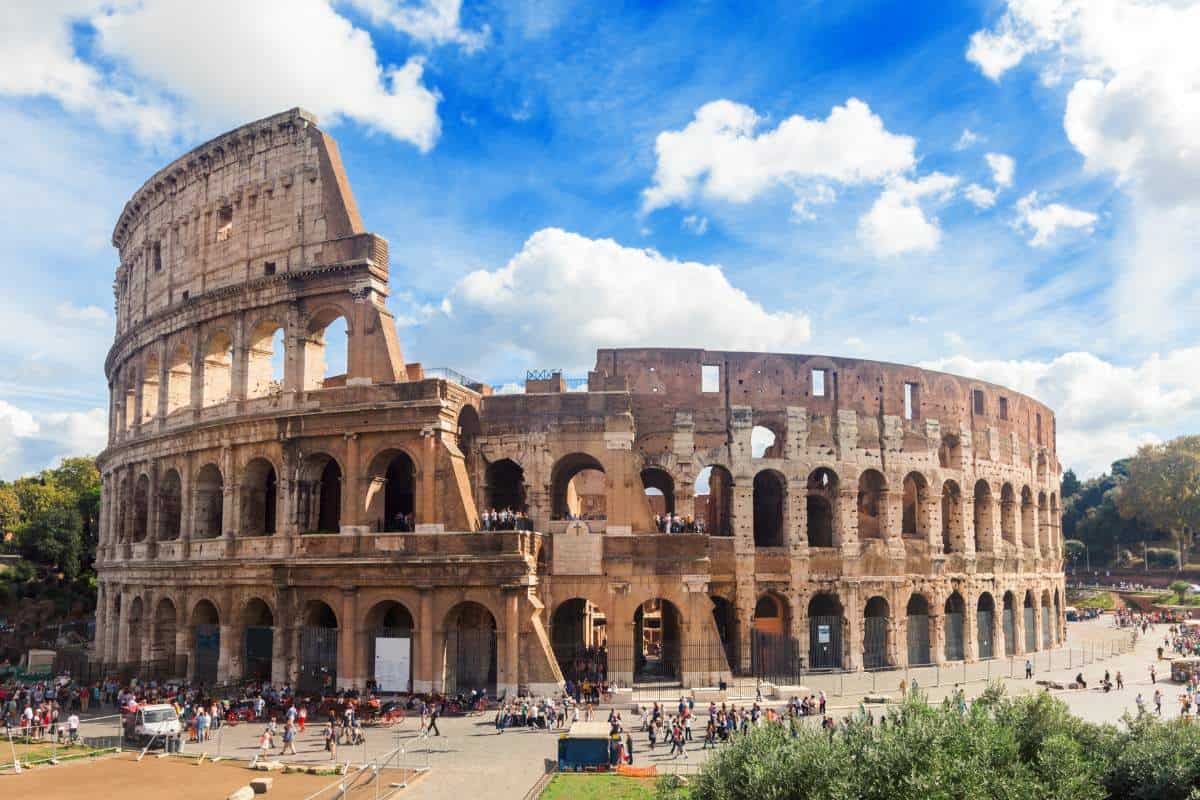
Pantheon (Italy)
The Pantheon in Rome was built in 27 BC and is one of the world’s most well-known and enduring architectural structures. It was originally built as a temple to all the gods of Ancient Rome by Marcus Agrippa in 27 BC. The original structure was destroyed by fire in 80 AD and rebuilt by Emperor Hadrian in 126 AD. Almost two thousand years after it was built, the Pantheon’s dome is still the world’s largest unreinforced concrete dome, standing at 142 feet in diameter. While it is a famous landmark and monument of world heritage, the Pantheon still functions as a place of worship today.
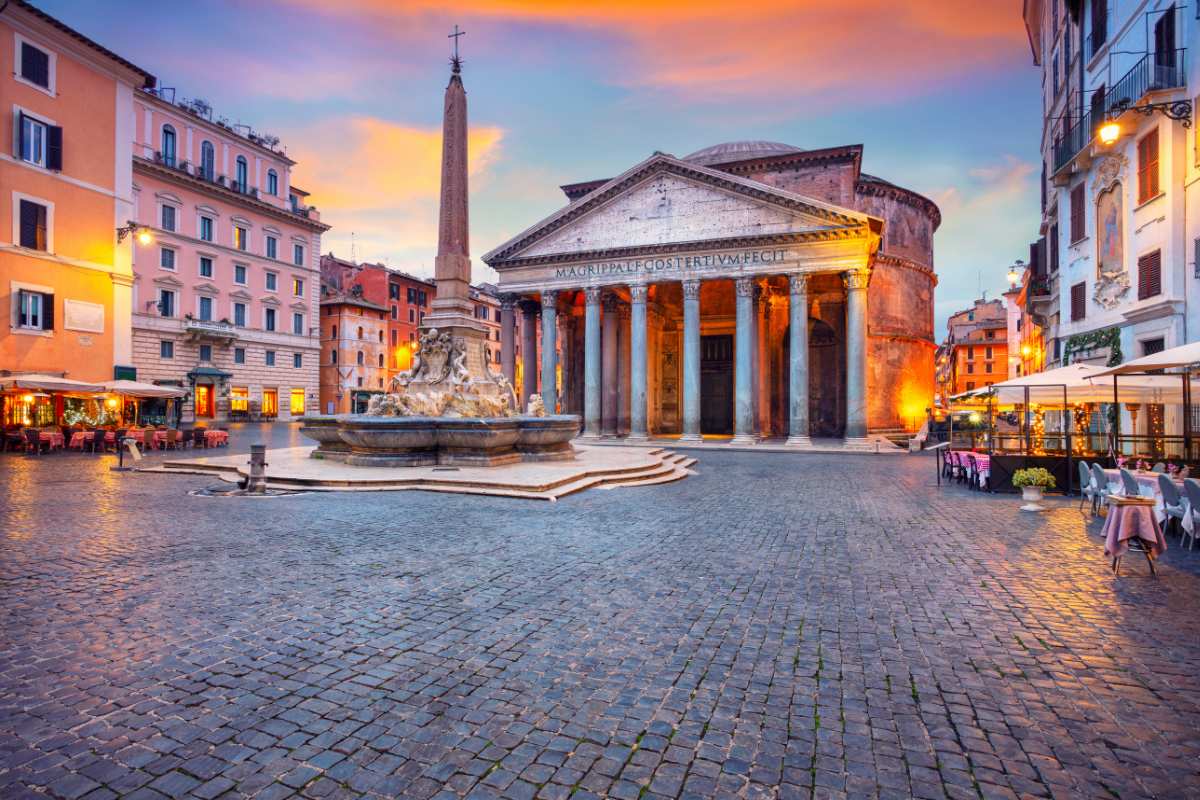
The Sistine Chapel (Italy)
The Sistine Chapel in Vatican City was built by Pope Sixtus IV between 1473 and 1481. Probably one of the things it is most known for is the ceiling that Michelangelo adorned in Renaissance frescoes in the 16th century. The ceiling of the Sistine Chapel is believed to be one of the most significant artistic accomplishments of all time. Today, the Sistine Chapel is still in use and is where the process of selecting a new pope is conducted.
Trevi Fountain (Italy)
The Trevi Fountain is a baroque masterpiece located in Rome, Italy. It is one of the most famous fountains in the world. Construction began in 1732, but it was not finished until 1762. It was designed by Italian architect Nicola Salvi and was inspired by the Roman Forum. The fountain is 85 feet high and 65 feet wide and is decorated with sculptures of mythological figures. Water cascades from the fountain into a large basin, and it is believed that throwing a coin into the fountain will bring good luck and a return to Rome.
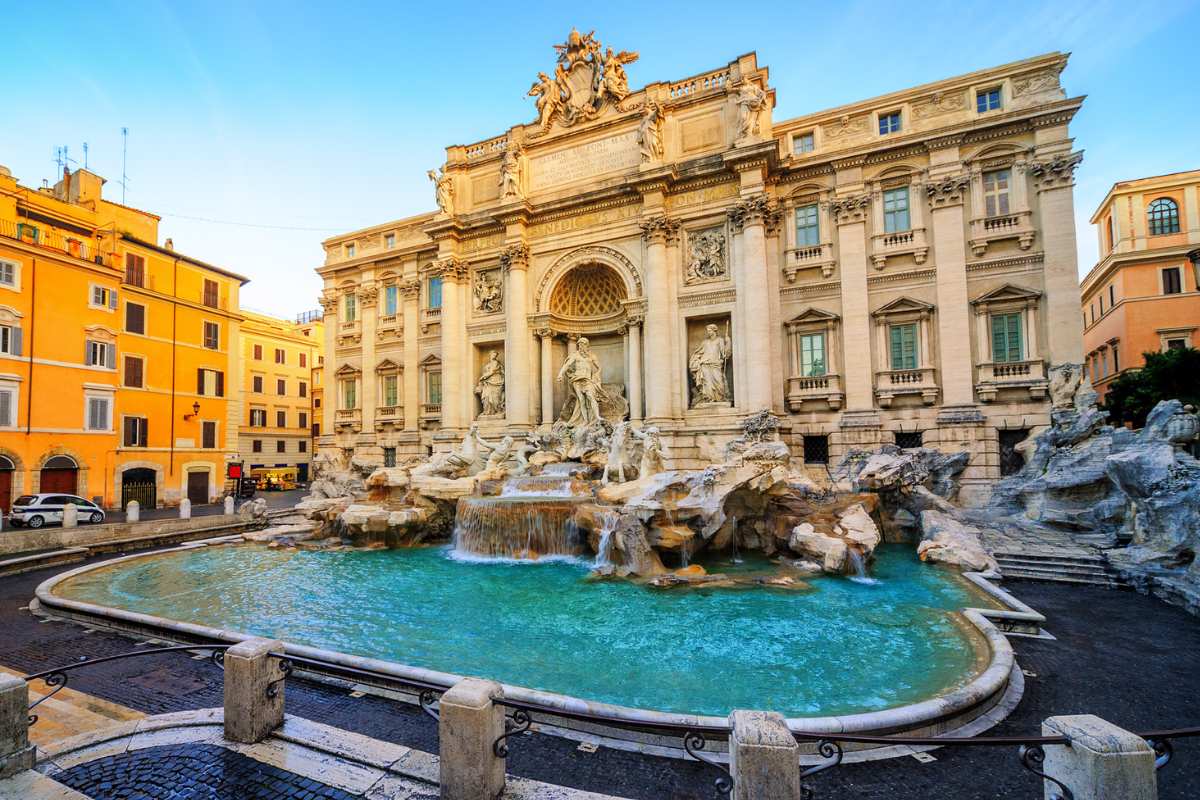
The (Leaning) Tower of Pisa (Italy)
The Leaning Tower of Pisa is over 800 years old and is the third-oldest standing structure in the city of Pisa. The famous leaning tower is actually the bell tower of the Pisa Cathedral, with both structures part of the Piazza dei Miracoli. Construction of the leaning tower began in 1172, and by the time the tower was completed in 1372, the lean of the tower was already visible. Over the years, engineers and architects have worked to stabilize the tower, and the Leaning Tower of Pisa remains an impressive feat of engineering.
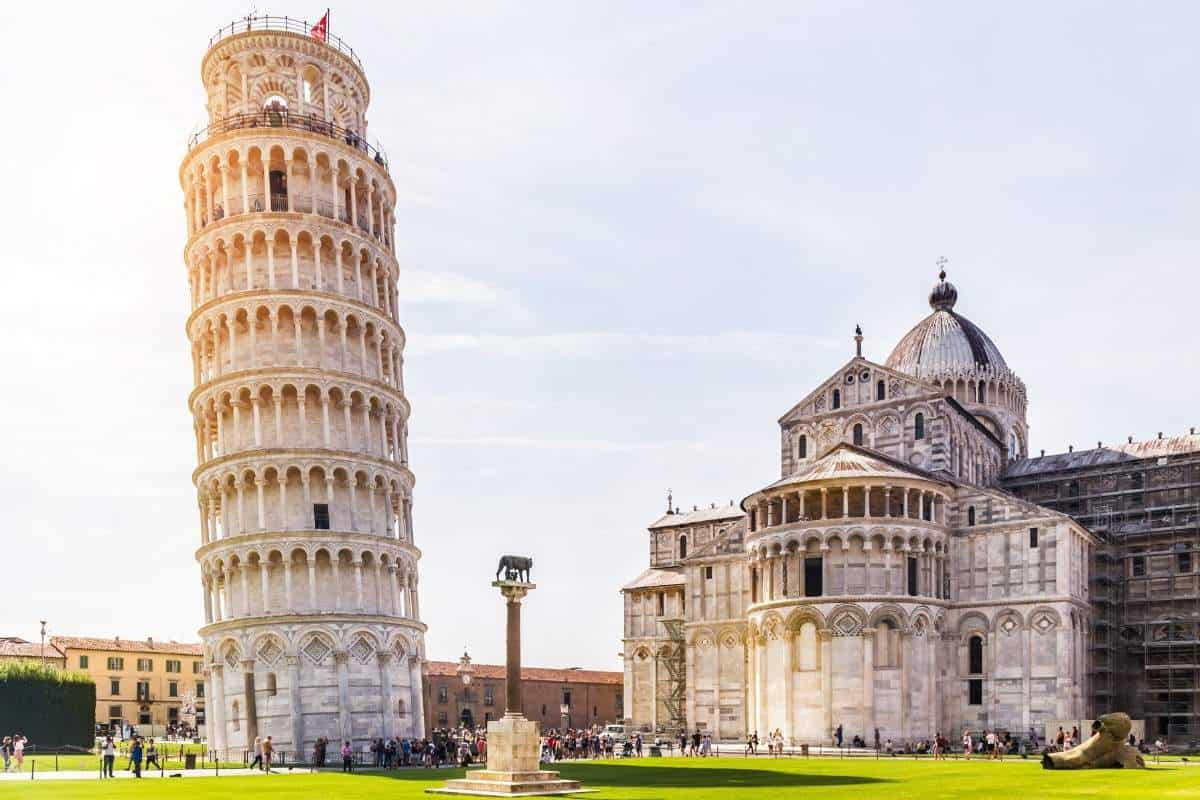
Rialto Bridge (Italy)
The Rialto Bridge in Venice, Italy, is a stone arch bridge crossing over the narrowest point of the Grand Canal in the heart of Venice. Built in the 16th century, the Rialto Bridge is the oldest bridge across the canal and is renowned for its Renaissance architecture. The Grand Canal itself in Venice is also one of the most famous landmarks in Europe. It is a main water thoroughfare in the city and is lined with beautiful buildings and bridges. It is from the Grand Canal that pictures of people being transported by gondolas can be found.
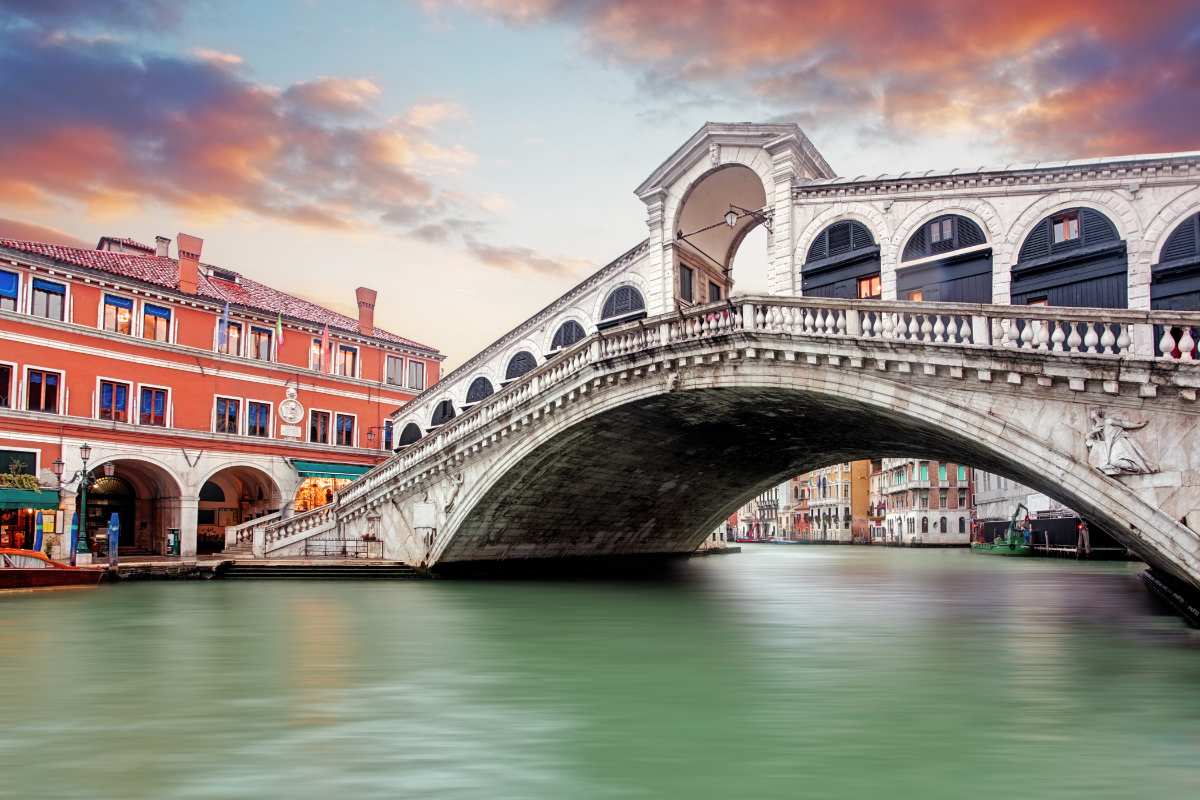
Vatican City (Vatican)
Vatican City, the smallest sovereign state and country in the world, is home to many iconic buildings with spectacular architecture and monuments for the Catholic Church. The most famous is St. Peter’s Basilica, a Renaissance church built in the 16th century. This structure is one of the most important religious sites in the world and the largest Christian church in Europe. It is also the burial site of St. Peter, a disciple of Jesus. The Sistine Chapel is also located in Vatican City and is renowned for its artwork and frescoes painted by Renaissance masters, including Michelangelo. The Vatican Museums house some of the world’s most famous artwork and sculptures, attracting millions of visitors annually.

The Tower of London (United Kingdom)
The Tower of London has a long and complex history. It was first built by William the Conqueror in 1078 as part of his campaign to secure control of London and the surrounding area. Specifically, the Tower of London was built as a home for the Crown Jewels. Over the centuries, it has served as a royal palace, a prison, an armory, and a treasury. During the Tudor era, it was mainly used as a prison and was the site of many famous executions. During the 20th century, it became a popular tourist attraction and was designated a UNESCO World Heritage Site in 1988.
The Mysterious Stonehenge (United Kingdom)
Stonehenge is an impressive prehistoric monument located in Wiltshire, England, and is considered to be over 5,000 years old. It was built in several stages between 3000 and 1500 BC and is composed of earthworks surrounding a circular setting of large standing stones. It is believed that Stonehenge was used as an important religious site by the ancient druids and was likely a site of burial rituals. To this day, the exact purpose of Stonehenge remains a mystery. However, it is believed that it was likely used as a temple, a burial ground, a healing center, and even a calendar. Archaeological evidence suggests that Stonehenge was a place of great importance in prehistoric times.
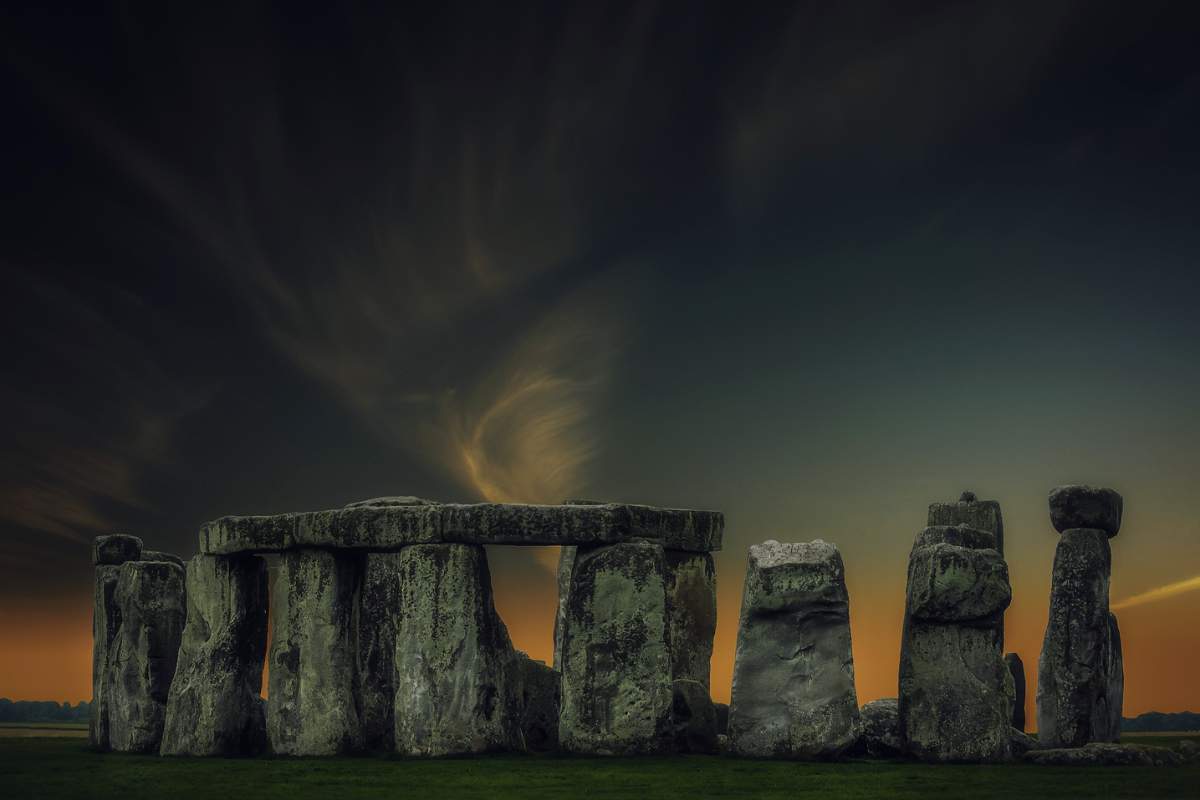
London Bridge (United Kingdom)
The Tower Bridge in London was built in 1894 and is one of the city’s most famous symbols. Additionally, the Tower Bridge in London is one of the most famous landmarks in Europe. It was built between 1886 and 1894 to connect the north and south sides of the River Thames. Tower Bridge was designed by Horace Jones, the City of London’s architect, and combines a bascule and suspension bridge. The two towers are connected by two walkways, with the bridge’s central span being 244 metres long. The bridge is accessible to pedestrians, and it is also a popular tourist attraction.
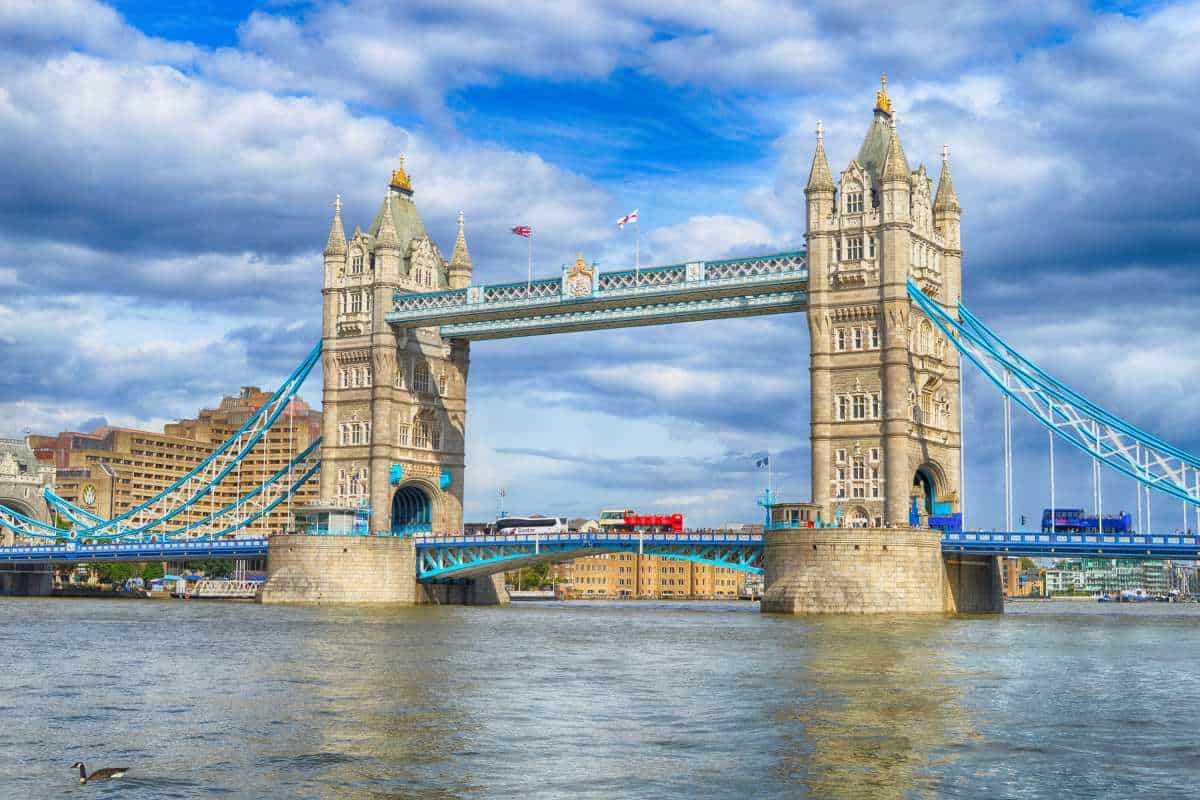
Buckingham Palace (United Kingdom)
Beyond red double-decker buses, one of the most famous landmarks to symbolize London, England, is the official residence of the British royal family, Buckingham Palace. Built in the early 1700s as a house for the Duke of Buckingham, it was converted into a royal palace in the 1820s. Since then, Buckingham Palace has been the official London residence of the British monarchs since the accession of Queen Victoria in 1837. The Palace’s private quarters have been Queen Elizabeth II’s formal residence since 1936, when her father took the throne and is speculated to be the new home of King Charles III and his Queen Consort, Camilla. As a result, Buckingham Palace is one of the world’s most famous buildings.
Big Ben (United Kingdom)
A famous landmark in Europe and distinctive of London, England, Big Ben is the nickname given to the clock tower of the Palace of Westminster. Strictly speaking, Big Ben refers only to the bell, which weighs 15.1 tons (13.7 metric tons). However, it is commonly associated with the clock and bell tower found at the northern end of the Houses of Parliament building in London.
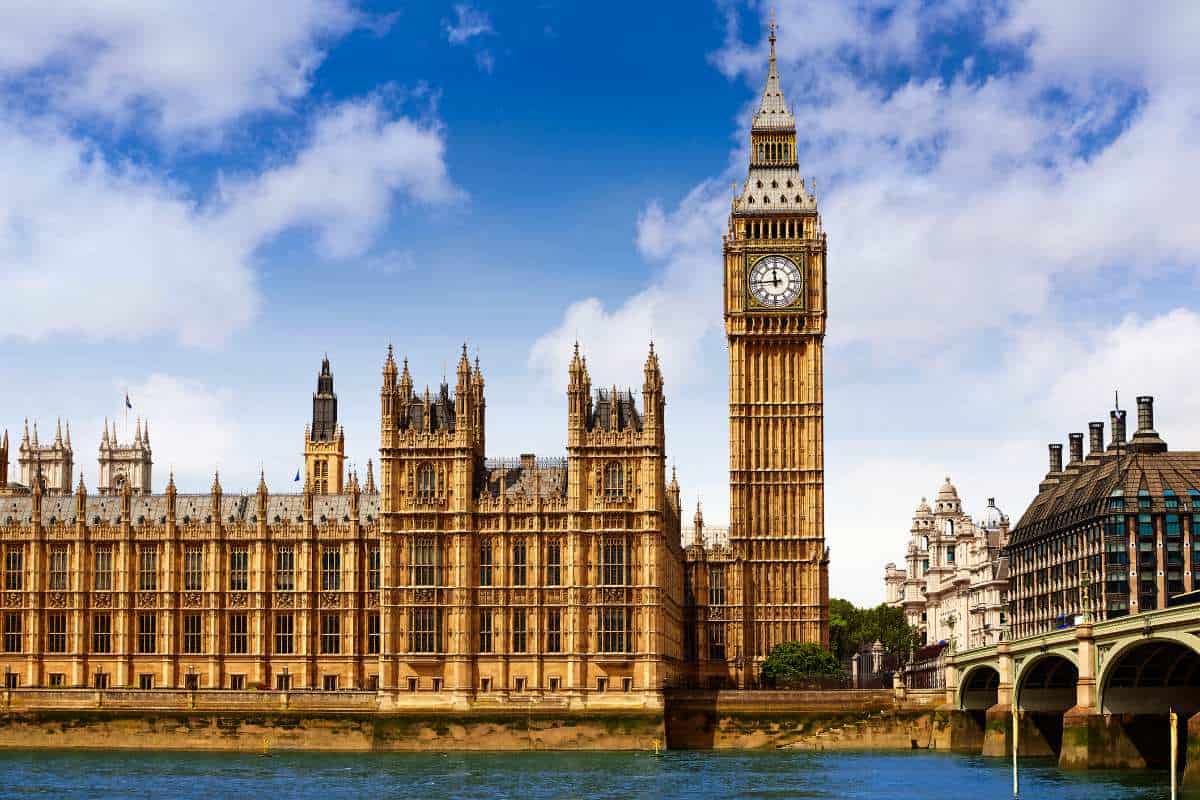
Edinburgh Castle (Scotland)
Edinburgh Castle is one of the most famous monuments in Scotland! Edinburgh Castle, also known as Castle Rock, sits atop an extinct volcano that last exploded nearly 340 million years ago. The castle is over 900 years old and holds the prestigious title of being the most besieged castle in Europe. Fun fact: Edinburgh Castle was once home to an elephant after Highlanders returned to Edinburgh in 1838 after being posted in Sri Lanka. The elephant lived at the castle and became the head of the infantry marching band.
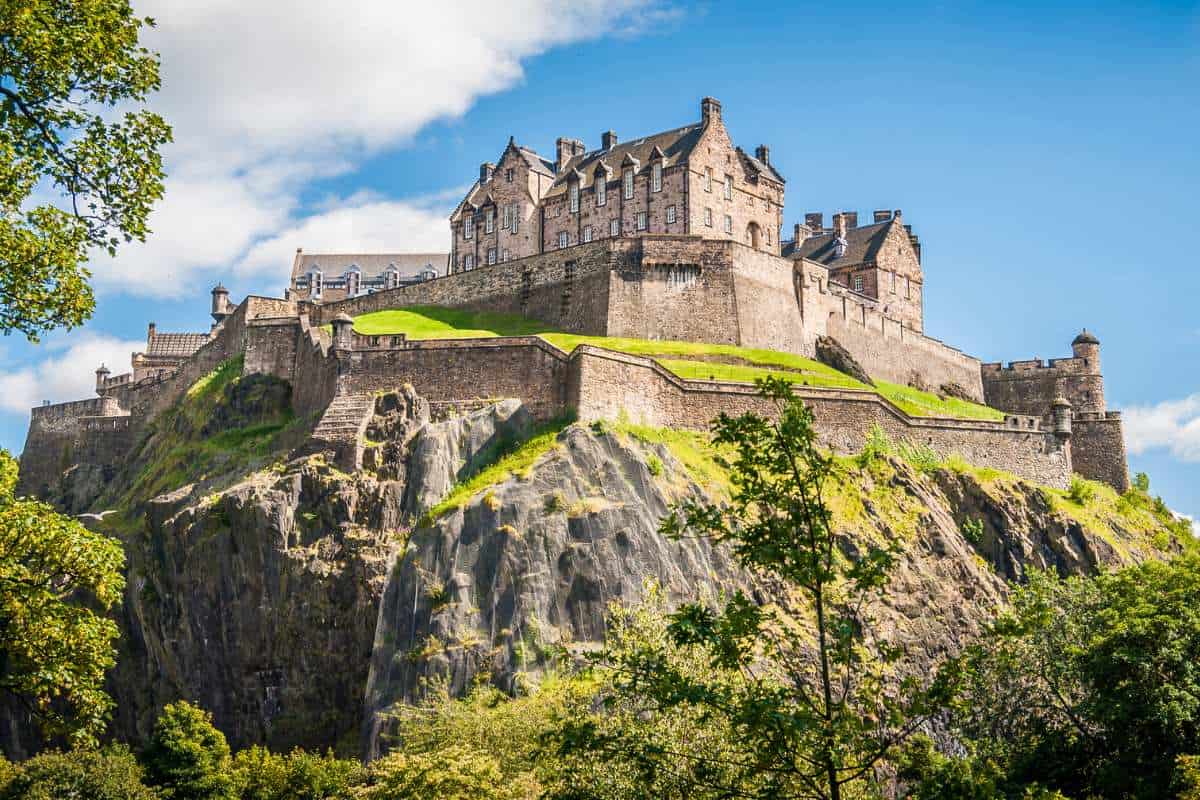
Brandenburg Gate (Germany)
Brandenburg Gate is a monument of great historical significance in Berlin, Germany. It was originally built in the 18th century to symbolize peace but was destroyed during World War II. It was reconstructed in the 1950s and has since become a symbol of German unity and a reminder of the country’s turbulent past. When the Berlin Wall fell in 1989, Brandenburg Gate was where thousands of people celebrated the momentous occasion.
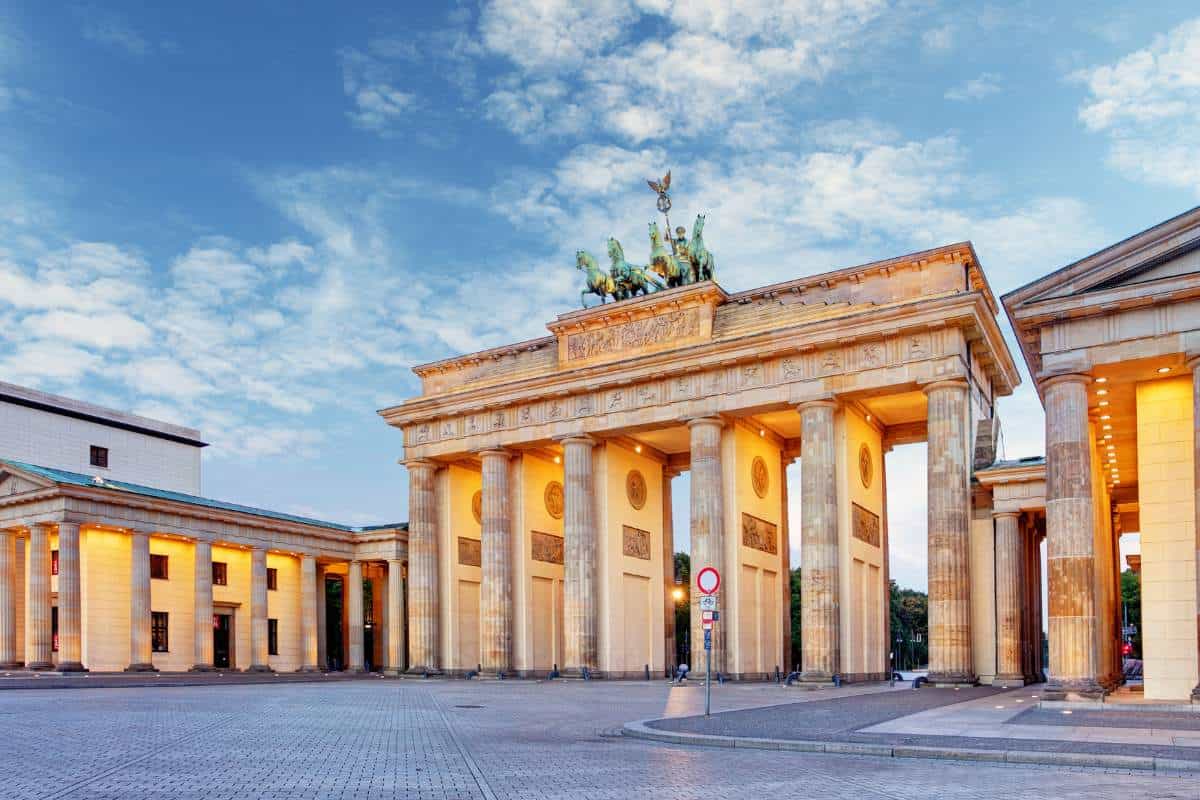
Reichstag (Germany)
The long and storied history of the Reichstag in Berlin, Germany, dates back to 1871 when it was first established as the seat of the German Parliament. In 1933, the parliament building was set alight and blamed on a Dutch communist, leading to the Nazi takeover of Germany. During the Cold War, the Reichstag was divided between East and West Germany and was only reunified in 1990. After German reunification, the Reichstag was renovated and in 1999 became the home of the German Parliament. Today, the Reichstag is an iconic landmark and a symbol of German democracy.
Cologne Cathedral (Germany)
Cologne Cathedral is one of Germany’s most impressive landmarks and one of the most visited monuments in Europe, attracting an average of 20,000 people per day. Construction of the cathedral began in 1248 and was completed in 1880, with a long period of time in between when the project was halted. The cathedral is the largest Gothic church in Northern Europe, with two massive towers standing 157 meters tall. The cathedral was declared a UNESCO World Heritage site in 1996 and is still the seat of the Archbishop of Cologne.
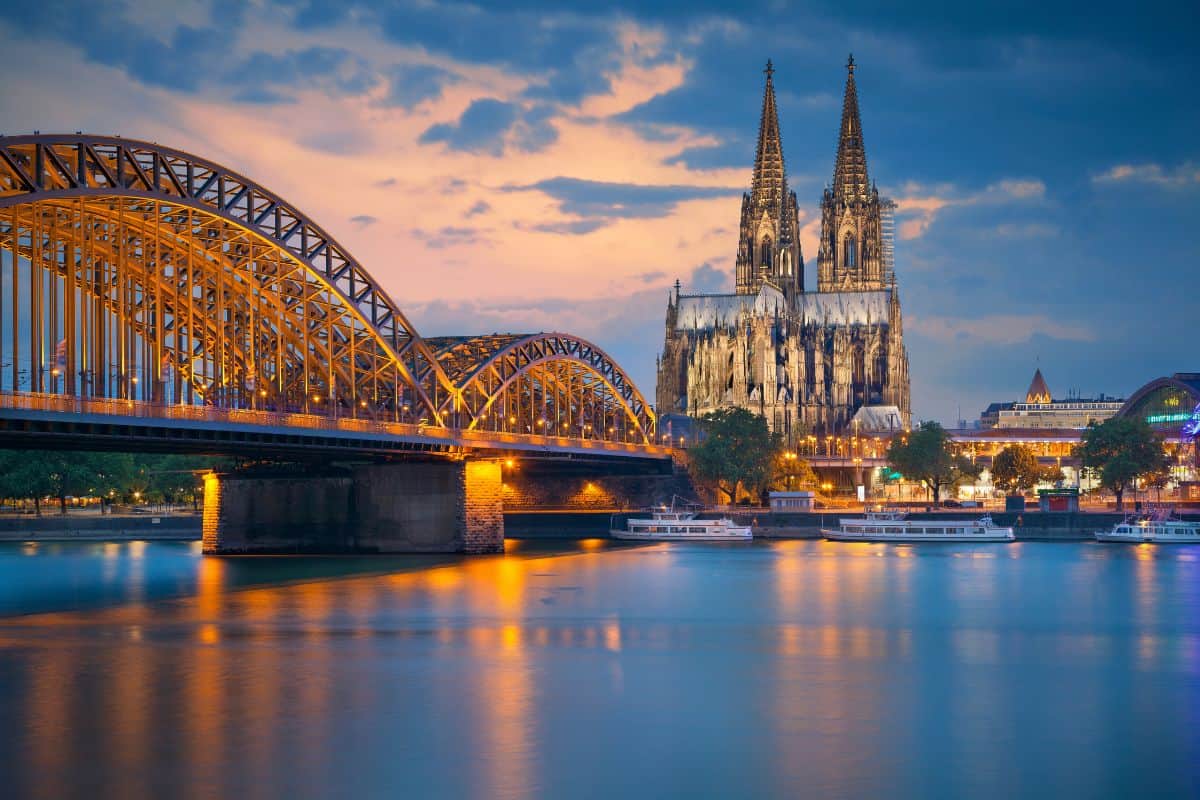
Neuschwanstein Castle (Germany)
The Neuschwanstein Castle in Bavaria, Germany, was built in the 19th century and is thought to have been the inspiration for the castle in the Disney movie “Sleeping Beauty.” Construction began during the 1870s by the mad King Ludwig II, but much of this historic castle was left with an unfinished interior when the king ran out of money. As a result, it has mainly remained uninhabited throughout history, and due to the delicate nature of some of the rooms, the only way to see the interior of Neuschwanstein Castle is through a guided tour. If you’re interested in more castle facts, you can do a deep dive while reading our famous Castles of the World blog post.
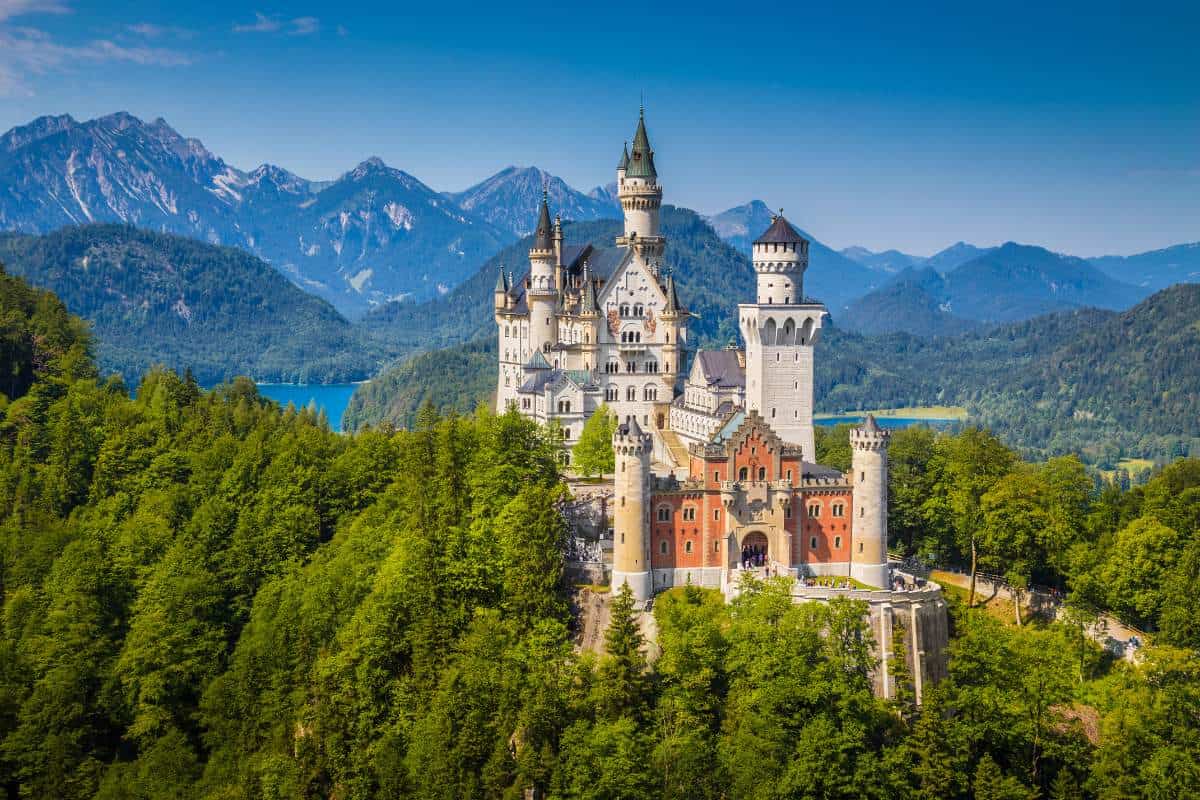
St. Basil’s Cathedral (Russia)
The Cathedral of Vasily the Blessed, most commonly known as St. Basil’s Cathedral, is one of the most famous European buildings and has become a symbol of Russia. It is an Orthodox church located in Moscow’s Red Square and was built between 1555 and 1561 under the reign of Ivan the Terrible. With an extremely rich history, St. Basil’s Cathedral was once the tallest building in Moscow and has served as a museum since 1928. It is deemed an architectural masterpiece and one of Russia’s most visited landmarks.
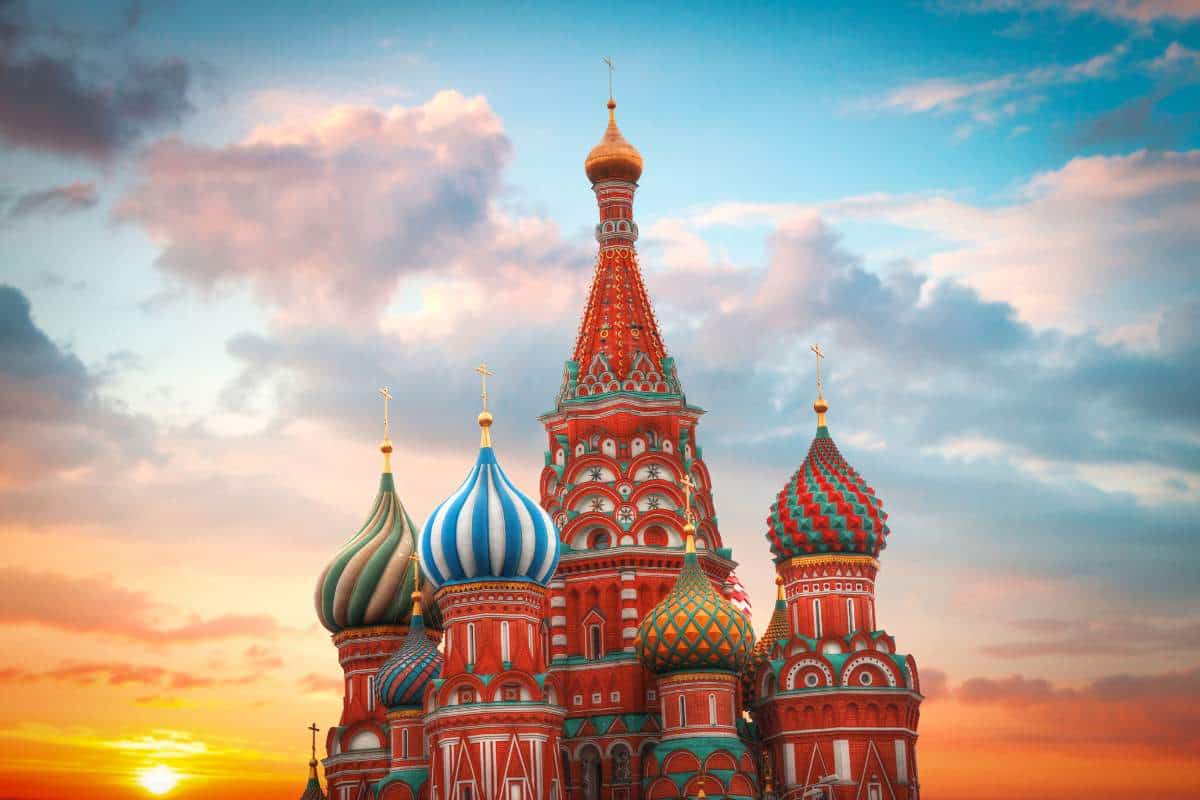
Red Square (Russia)
Red Square in Russia is a historical plaza that has been around for centuries. It was initially used for military parades and other ceremonies. Over the years, it has become a symbol of the Russian nation and a reminder of the country’s roots and history. The square is home to famous monuments such as St. Basil’s Cathedral, the Kremlin Wall, and Lenin’s Mausoleum, which are all significant to Russian culture. While it mainly symbolizes Russian politics, Moscow’s Red Square is named for its beauty: Krasnaya, or “red,” meant “beautiful” in old Russian.
Hungarian Parliament Building (Hungary)
The Hungarian Parliament Building is a prominent landmark in Budapest. It lies in Lajos Kossuth Square, on the bank of the Danube. Built between 1885 and 1904, it is one of the tallest buildings in Budapest and houses the National Assembly, the highest legislative body in Hungary. The Hungarian Parliament Building is an impressive neo-Gothic structure with a colossal dome, elaborate spires, and intricate statues. It features an impressive 96-meter-high central hall, and its walls are decorated with stained glass, murals, and sculptures.

The Acropolis of Athens (Greece)
The Acropolis of Athens was built in the 5th century BC and is home to one of the most iconic monuments in Greece, the Parthenon. The Acropolis is a citadel located on a high hill overlooking the ancient city of Athens in Greece. The Acropolis is the most complete surviving ancient Greek monumental complex, still, much of its ornamentation and detail is now gone. One of these losses is a colossal statue of Athena, once located inside the Parthenon. The Athena Parthenos stood almost 40 feet tall and was made from gold and ivory by the sculptor Phidias.
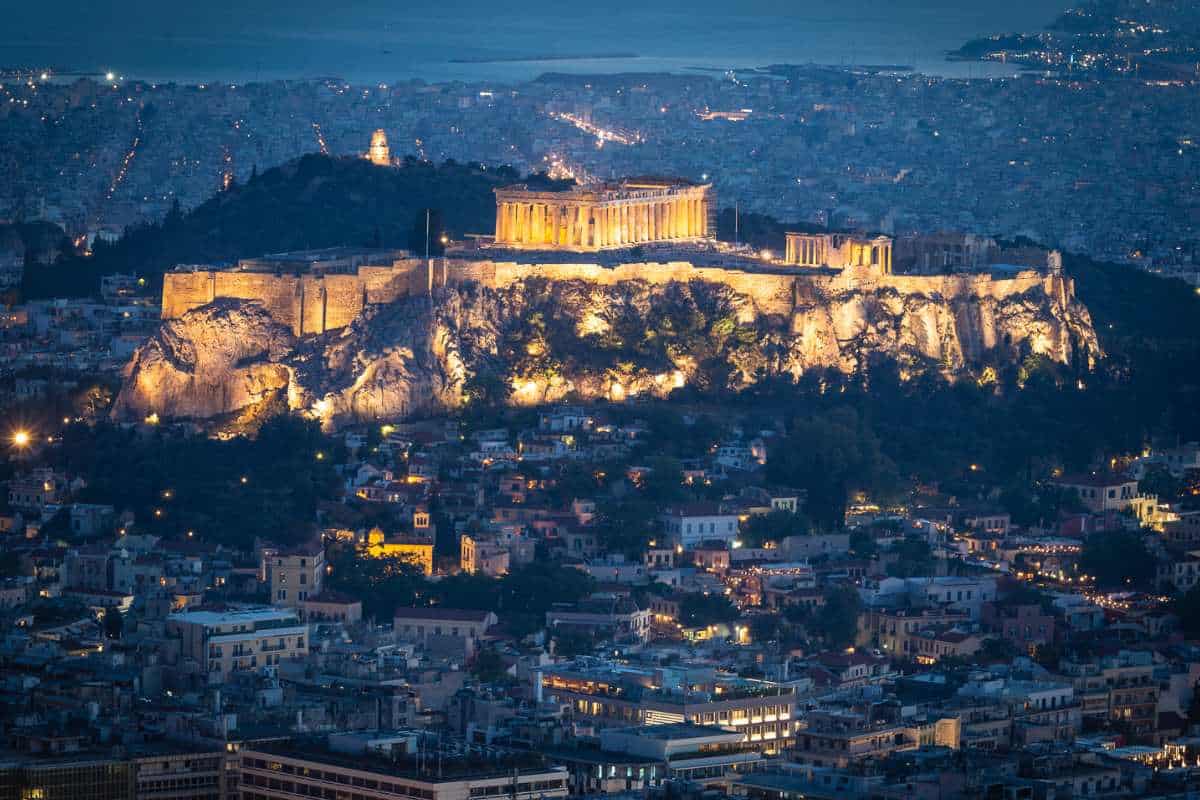
Hagia Sophia (Turkey)
Hagia Sophia, or more formally, the Hagia Sophia Grand Mosque in Istanbul, is not only one of the most famous landmarks in Europe but also one of the world’s most iconic and majestic buildings. It was originally constructed as a church in 537 AD during the Byzantine Empire. It served as the seat of Eastern Orthodox Christianity and was home to many important ceremonies and events. In 1453, the Ottoman Empire conquered Istanbul and converted the Hagia Sophia into a mosque, adding a minaret and Islamic features to the building. In 1935, it was re-opened as a museum under the secular Republic of Turkey. Today, the Hagia Sophia is a UNESCO World Heritage Site and is Turkey’s most visited tourist attraction on top of being one of the most famous landmarks in Europe.
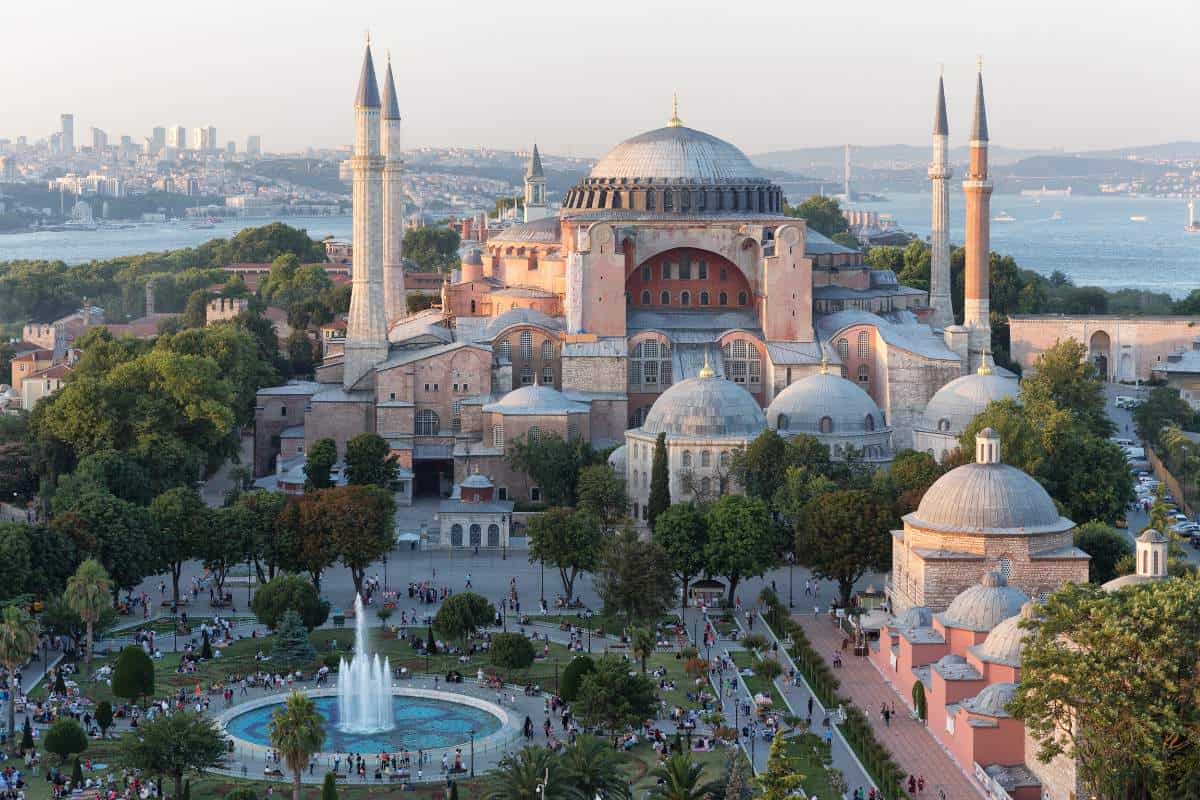
Guggenheim Museum (Spain)
The Guggenheim Museum in Bilbao, Spain, is a modern art museum designed by world-renowned architect Frank Gehry. It opened in 1997, becoming an instant icon for modern architecture. Since its opening, the Guggenheim has become a symbol for the city of Bilbao and an iconic destination for tourists worldwide. As one of the most recognizable and influential buildings of the 20th century, the Guggenheim is home to over 300 works of modern and contemporary art, as well as a large collection of more traditional art from the Middle Ages. It has become a major cultural center for the city of Bilbao and a must-see for any art enthusiast.
Sagrada Família (Spain)
The Sagrada Família in Barcelona is an unfinished Roman Catholic basilica designed by Antoni Gaudi and is one of the most visited monuments in Spain. Construction on the church began in 1882 and is still ongoing, with a projected completion date of 2026. The church is a UNESCO World Heritage Site and a symbol of Catalan culture. Sagrada Família has become a symbol of Barcelona, representing its rich history, culture, and architecture and is one of the most famous landmarks in Europe.
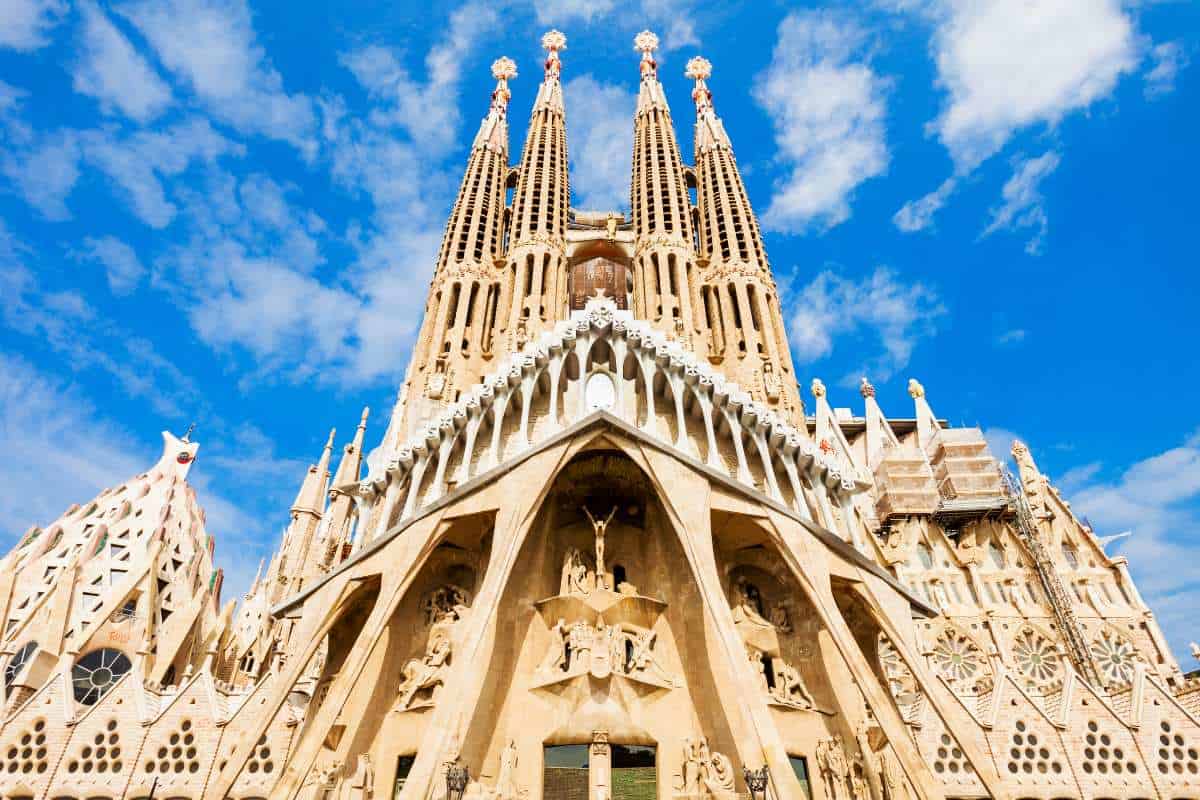
Tower of Hercules (Spain)
Located in A Coruña, Spain, the Tower of Hercules is the oldest Roman lighthouse still in use in the world. It was constructed in the 2nd century AD and stands at a height of 185 feet. The Tower of Hercules has been a symbol of the region for centuries, serving as one of the most famous landmarks in northwestern Spain. It is also an important cultural symbol, representing the city’s long history and its importance as a port city. The Tower of Hercules was declared a UNESCO World Heritage Site in 2009.
Alhambra Palace (Spain)
Alhambra Palace is an impressive palace and fortress complex in Granada, Spain, constructed during the mid-13th century. It was originally constructed as a small fortress in 889. It was then largely ignored until its ruins were renovated and rebuilt in the mid-13th century by the Moorish ruler Mohammed ben Al-Ahmar. The complex is composed of a number of buildings, including the main Palace, two large towers, and multiple smaller structures. Spain has many famous monuments, but the Palace is renowned for its stunning architecture and design, with intricate details of tiles, carved stonework, and beautifully painted walls. The Palace was added to the UNESCO World Heritage List in 1984.
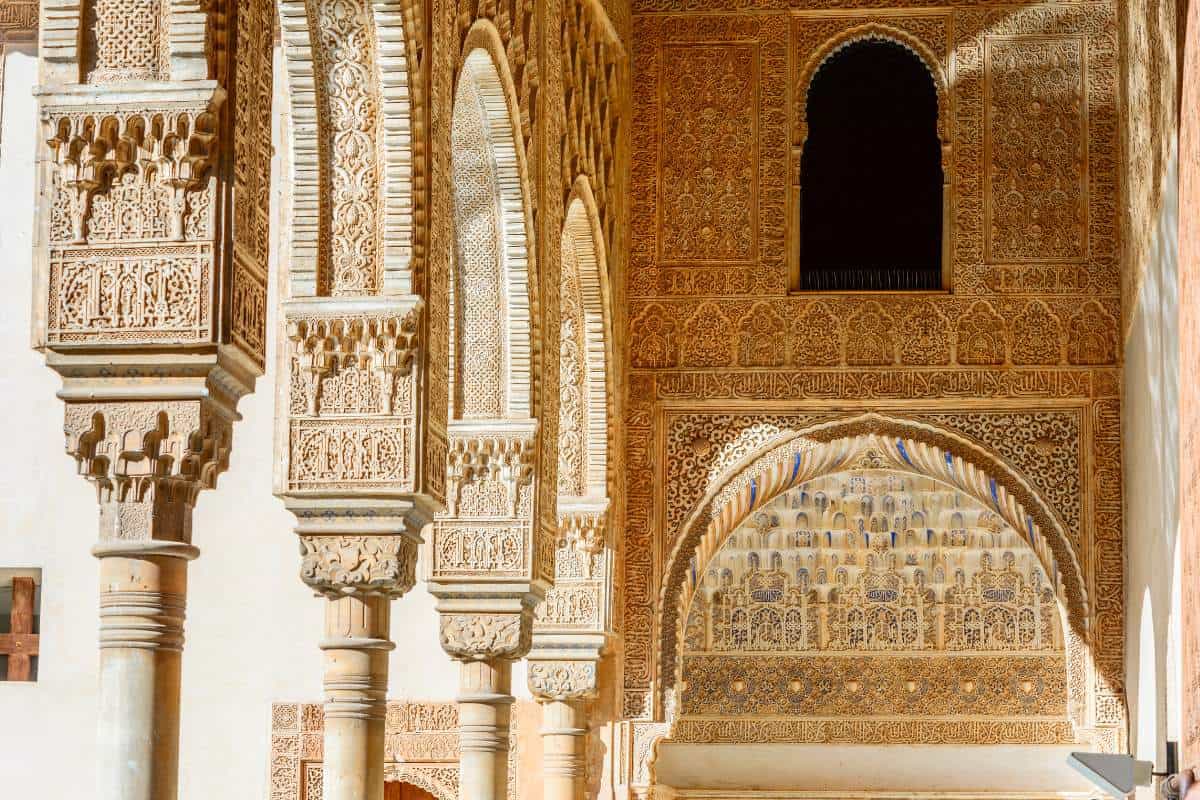
Little Mermaid Statue (Denmark)
The Little Mermaid statue that sits on the water at Langelinie Pier in Copenhagen, Denmark, was inspired by the fairy tale by Hans Christian Andersen. Unveiled on 23 August 1913, The Little Mermaid was a gift from Danish brewer Carl Jacobsen to the City of Copenhagen. The sculpture is made of bronze and granite and has come to symbolize both Copenhagen and Denmark.
Atomium (Belgium)
The Atomium in Brussels was built in 1958 for the World’s Fair, also known as Expo 58. The Atomium is a 102-metre tall structure that has nine 18-metre diameter stainless steel clad spheres connected by 20 tubes and forms the shape of an iron crystal magnified 165 billion times. Originally, the structure was not meant to survive the World’s Fair, but in the early 2000’s it underwent a major restoration to step more fully into its role as a symbol of Belgium. Now not only can visitors explore inside the structure that resembles an alien spaceship or the inner workings of a submarine, but at the top, take in incredible panoramic views of Brussels.
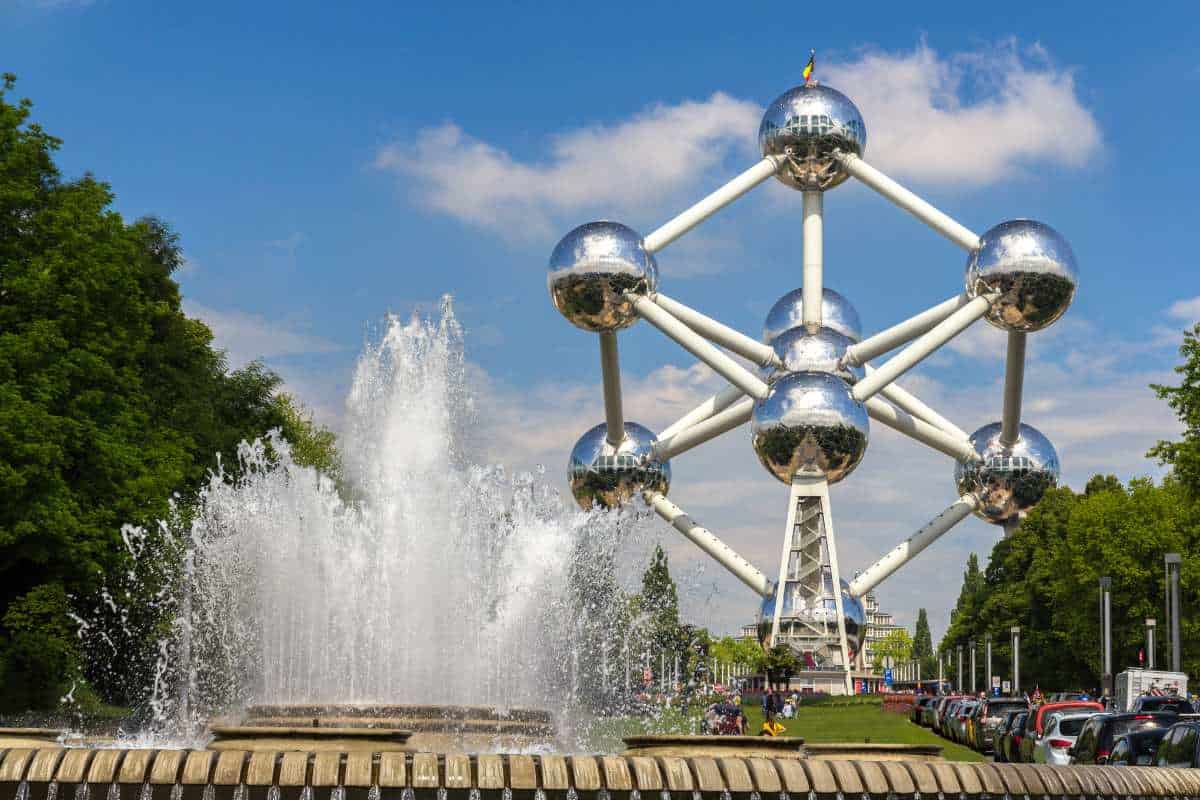
Belfry of Bruges (Belgium)
Another bell tower that is one of the famous landmarks in Europe! The Belfry of Bruges in Belgium was built in the 13th century and was originally used to call the citizens of Bruges to meetings and to sound alarms in times of danger. Standing at 83 meters high, it formerly housed a treasury in the Middle Ages, municipal archives, and served as an observation post. Visitors who climb up the 366 stairs are rewarded with an impressive view of Bruges. The carillon in the tower has no fewer than 47 bells, and Bruges has a city carillonneur who plays the bells on Wednesdays, Saturdays, and Sundays in the afternoon. It one of the most popular and famous landmarks in Europe and was even featured in the Hollywood film “In Bruges,” starring Colin Farrell and Brendan Gleeson.
Canals of Amsterdam (Netherlands)
The canals of Amsterdam are essential to the city’s history and culture. Dating back to the 17th century, the canals were a major factor in the city’s maritime and trading hub success. Amsterdam’s signature canals are now one of the main attractions for visitors to the city, with the 165 canals covering more than sixty miles of the city. The canals serve as a reminder of the city’s rich past and its importance in Dutch culture. Tourists can explore the city’s waterways by taking a boat tour or enjoy the views of the canals from the comfort of one of its many canal-side cafes.
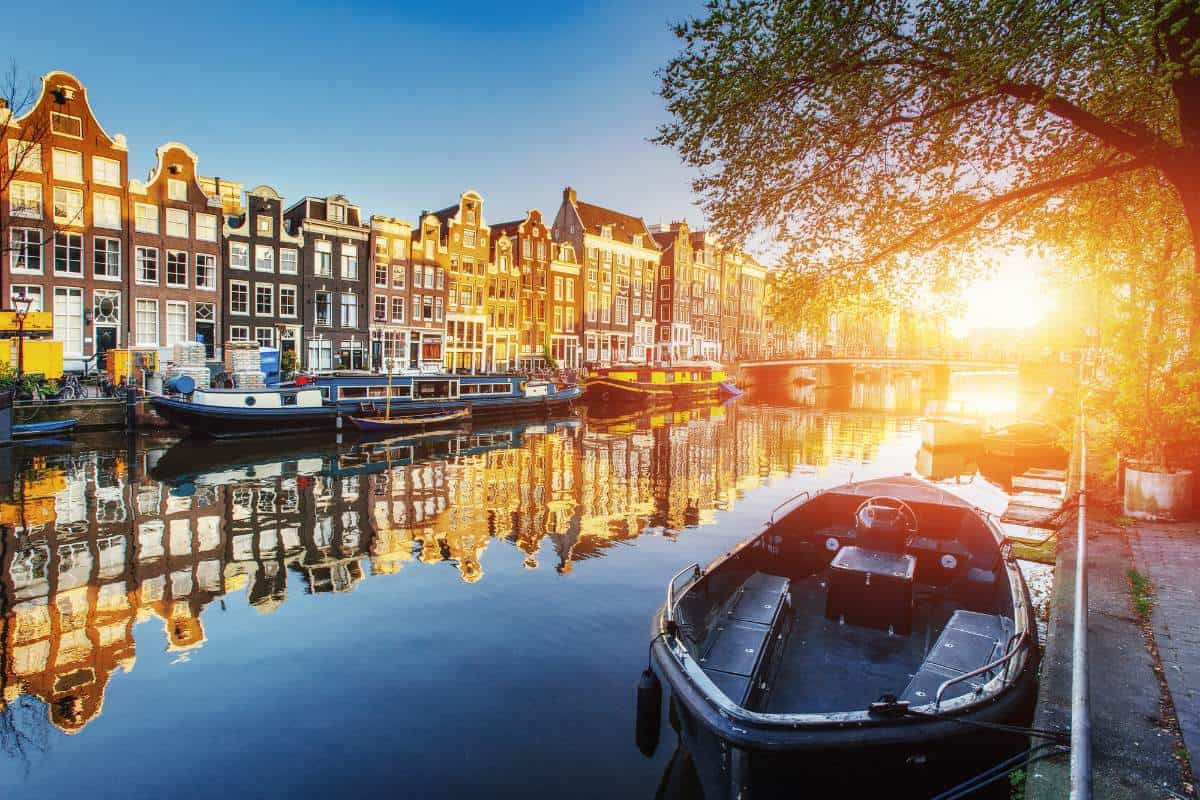
Schönbrunn Palace (Austria)
Schönbrunn Palace touted as the #1 sight in Vienna and is a very famous landmark in Europe. It has over 1,400 rooms, a zoo, and a spectacular garden. It functioned as the primary summer residence of the Habsburg rulers for generations and was also the birthplace of Franz Joseph, the last and longest-reigning emperor of Austria. Following the downfall of the Habsburg monarchy in 1918, the Palace became the property of the Austrian government and was preserved as a museum and later as a UNESCO World Heritage Site.
Charles Bridge (Czech Republic)
Charles Bridge is a historic bridge that spans the Vltava River in Prague, Czech Republic. It was commissioned in 1357 by King Charles IV and completed in the early 15th century. The bridge is decorated with a continuous alley of 30 statues and statuaries, most of which date from the 17th century. The bridge also served as a gateway between two main Prague districts, the Old Town and Lesser Town and was the only means of crossing the river Vltava until 1841. Charles Bridge is one of Prague’s most recognizable and famous landmarks, drawing millions of visitors annually. It symbolizes Czech history and culture and is considered one of the city’s most beautiful and romantic spots.
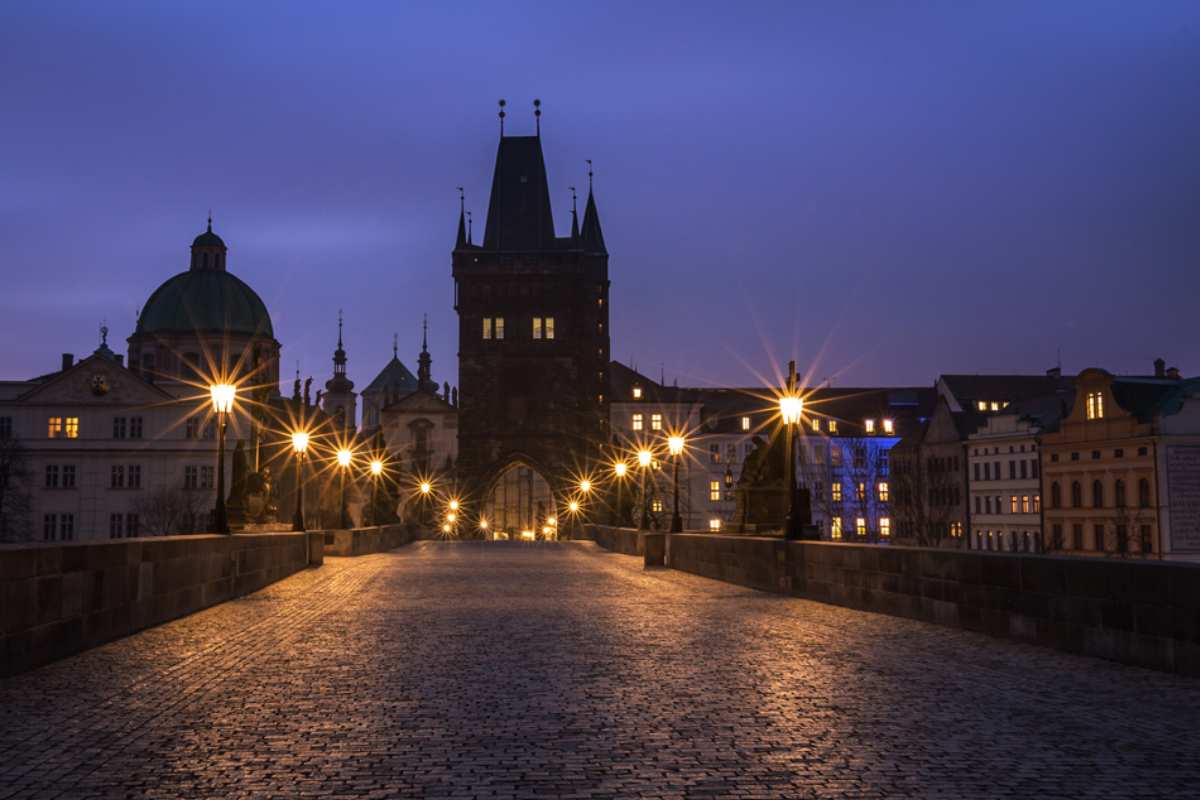
Prague Castle (Czech Republic)
Since its inception in around 880, Prague Castle has been one of Europe’s most historically significant sites and continues to be one of the most famous landmarks in Europe. Located in Prague, Czech Republic, the castle has been the seat of political power for centuries. It has been the home of kings of Bohemia, Holy Roman Emperors, and presidents of Czechoslovakia and the Czech Republic. According to the Guinness Book of World Records, Prague Castle is the largest coherent castle complex in the world, with an area of almost 70,000 m². The castle is a major tourist attraction, full of museums and galleries to explore and the stunning Gothic architecture that makes it so special.
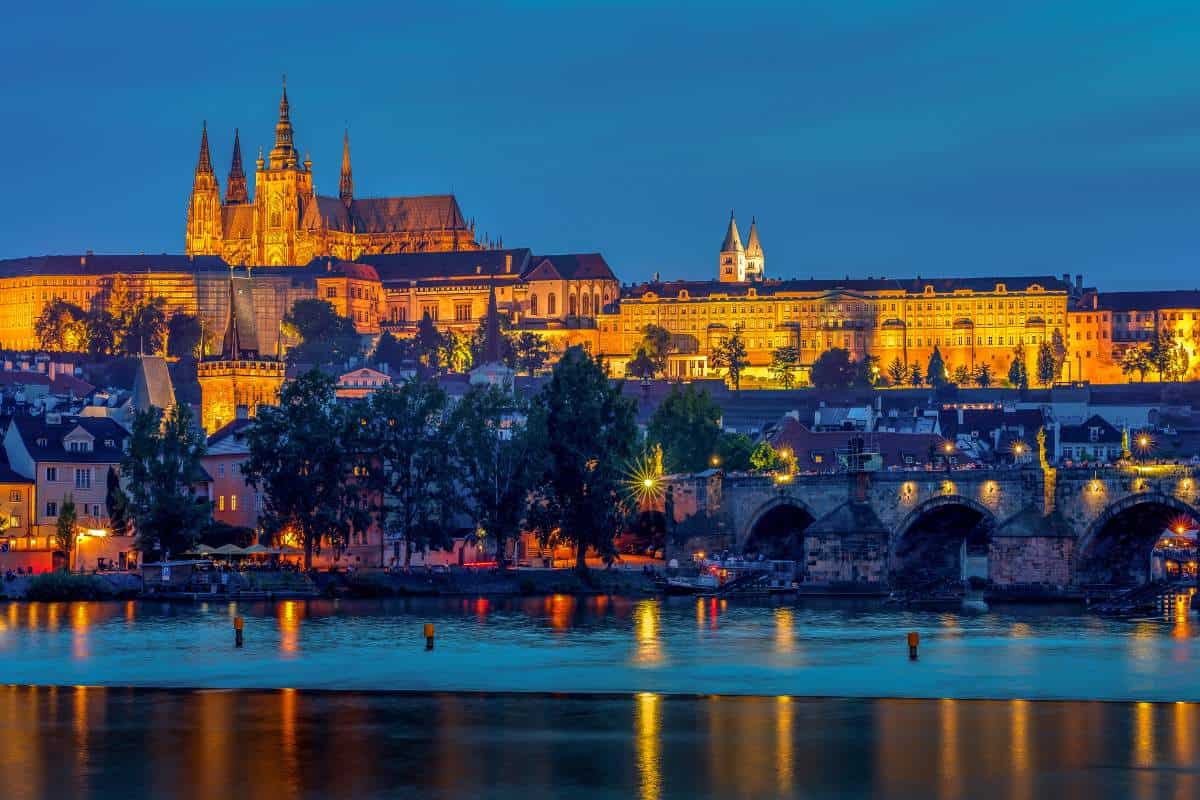
Wawel Castle in (Poland)
Wawel Castle is a national Polish landmark located in the city of Kraków. This castle has a rich and fascinating history, having been the residence of Polish royalty since the 14th century. It has also been the hub of politics, culture, and religion in Poland throughout its centuries of existence. The castle is home to many historical artifacts, including the remains of King Casimir III the Great, the Royal Treasury and Armoury, and the legendary Wawel Dragon. Today, Wawel Castle is a major tourist attraction, with visitors from all over the world exploring its majestic architecture and learning about its fascinating past.
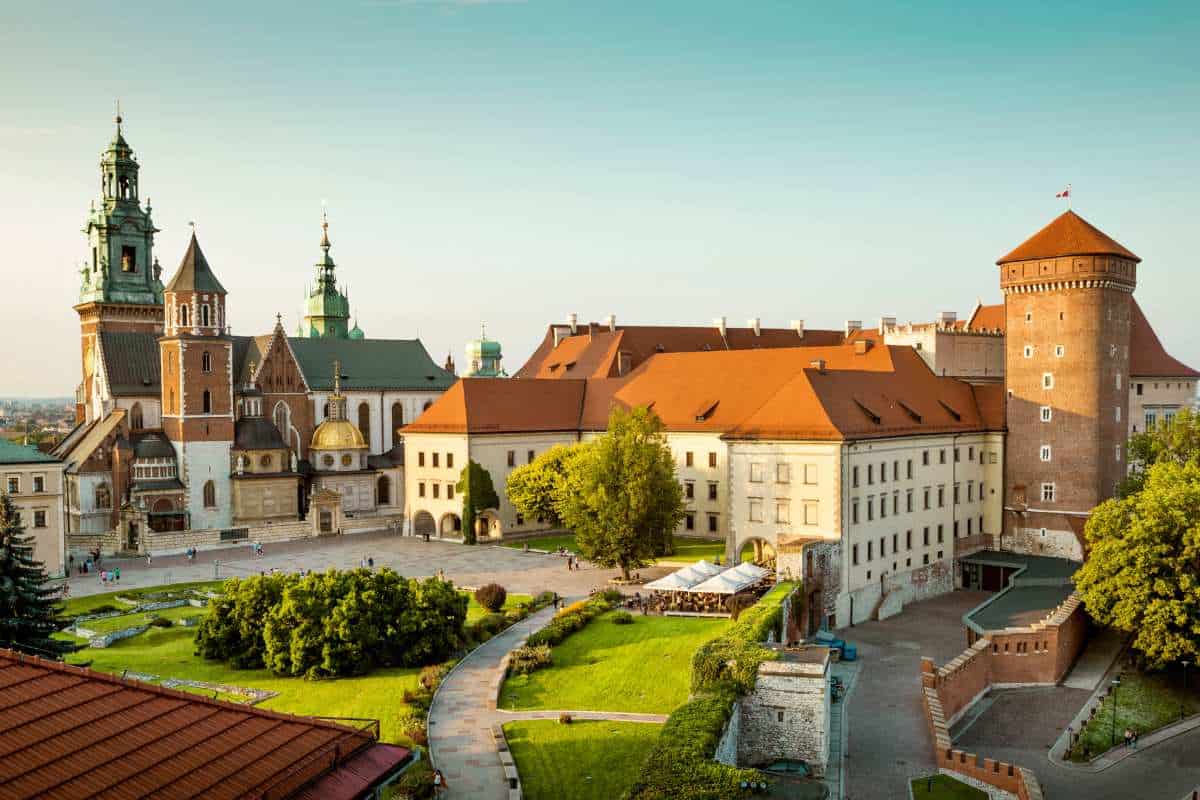
Now that you’ve read the whole post, get ready to test your knowledge in our quiz about fun facts about all the famous landmarks in Europe!
[adinserter name=”Block 1″]



